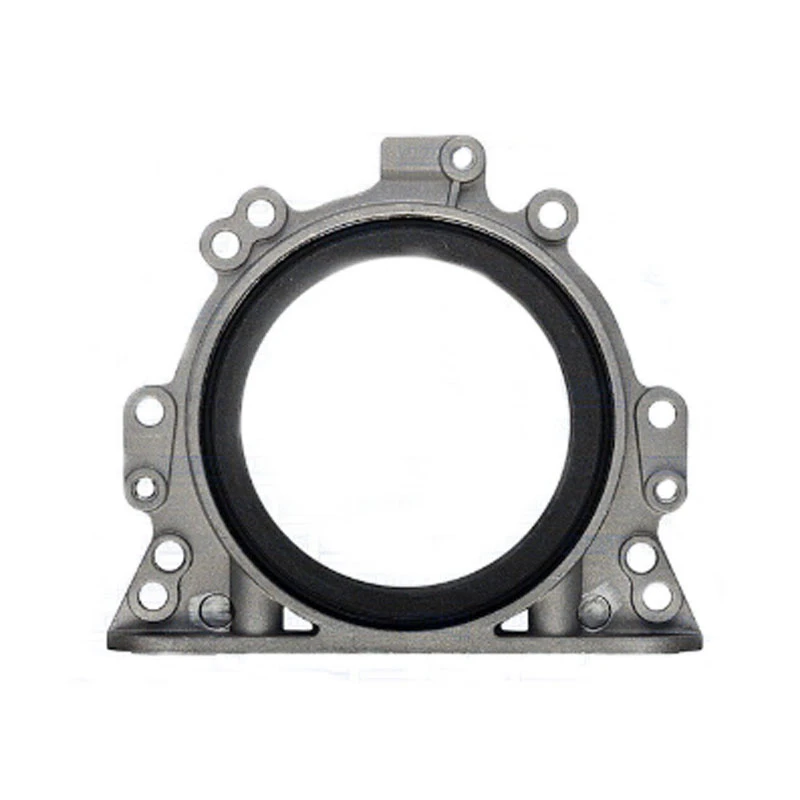oil pan and gasket
Understanding Oil Pans and Gaskets Essential Components of Your Engine
When it comes to the internal workings of an automobile engine, two components that often go unnoticed yet play crucial roles are the oil pan and the oil pan gasket. These parts work together to ensure that the engine operates smoothly and efficiently. In this article, we'll delve into the functions, importance, and maintenance of oil pans and gaskets, highlighting how they contribute to the overall performance of your vehicle.
What is an Oil Pan?
The oil pan, also known as the sump, is a crucial component located at the bottom of an engine. Its primary function is to store engine oil, which lubricates the moving parts, reduces friction, and helps in the cooling process. Made typically from metal or durable plastic, the oil pan serves as a reservoir that collects oil as it drains from various parts of the engine.
In addition to storage, the oil pan has several other key functions
1. Protection The oil pan protects the oil from contaminants and debris, preventing them from circulating through the engine. 2. Cooling By holding the oil, the pan also helps to dissipate heat generated by the engine, aiding in overall engine cooling.
3. Oil Pump Integration The oil pump is often located within or near the oil pan, allowing for efficient oil circulation throughout the engine.
4. Drainage The oil pan is designed with a drain plug, making it easy to change the oil and filter during routine maintenance.
The Role of the Oil Pan Gasket
The oil pan gasket is a seal that sits between the oil pan and the bottom of the engine block. Its main purpose is to prevent oil leaks, ensuring that the engine maintains the proper oil level and pressure. Made from materials like rubber, cork, or silicone, the gasket provides a flexible and durable seal that can withstand the high temperatures and pressures found within an engine.
A properly functioning gasket is essential; if it fails, it can lead to several problems
1. Oil Leaks A compromised gasket can result in oil leaking from the engine, which can damage other components and create a mess underneath your vehicle.
2. Engine Overheating Insufficient oil levels due to leaks can lead to increased friction and overheating, potentially causing catastrophic engine failure.
3. Poor Performance An oil leak can affect engine performance, resulting in reduced power and efficiency.
oil pan and gasket

Signs of Trouble When to Inspect Your Oil Pan and Gasket
Regular maintenance of your vehicle includes keeping an eye on the oil pan and gasket
. Here are some signs that you may need to inspect these components- Oil Spots Finding oil spots or puddles under your vehicle could indicate a leak.
- Low Oil Levels Consistently low oil levels despite regular top-ups may suggest a leak from the pan or gasket.
- Unusual Noises Loud or unusual noises from the engine can signal insufficient lubrication due to oil loss.
- Warning Lights If your vehicle's oil pressure warning light activates, it may be time to check for leaks or other issues.
Maintenance Tips
Maintaining your oil pan and gasket can prolong their life and the health of your engine. Here are some tips
1. Regular Oil Changes Change your engine oil and filter according to the manufacturer’s recommendations to prevent sludge buildup.
2. Check for Leaks Regularly inspect the area around your oil pan for signs of leaks or oil buildup.
3. Inspect Gasket Condition If your vehicle is older, consider inspecting the oil pan gasket periodically for signs of wear or cracks.
4. Professional Inspections If you suspect an issue, consult a professional mechanic to assess the oil pan and gasket health.
Conclusion
The oil pan and oil pan gasket are vital components in ensuring your vehicle's engine runs smoothly. Without them, the engine risks overheating, damage from friction, and potential failure. Regular inspections and maintenance can help keep these components in good condition, ultimately enhancing the performance and longevity of your vehicle. By paying attention to these often-overlooked parts, you can ensure that your automobile continues to operate at its best, providing you with a reliable and efficient driving experience.
-
The Ultimate Guide to Car Repair Kits: Tools and Essentials Every Driver Should Own
News Aug.01,2025
-
The Complete Guide to Oil Pan Gaskets: Sealing Engine Leaks the Right Way
News Aug.01,2025
-
Preventing Oil Leaks: A Complete Guide to Oil Pan Gaskets and Drain Seals
News Aug.01,2025
-
Everything You Need to Know About Oil Pan Gaskets and Drain Plug Seals
News Aug.01,2025
-
Essential for Car Owners: How to Use a Car Repair Kit to Deal with Minor Breakdown
News Aug.01,2025
-
Comprehensive Guide to Engine Oil Sump Gaskets and Related Seals
News Aug.01,2025
-
The Ultimate Guide to Boat Propeller Bearings and Trailer Wheel Bearings
News Jul.31,2025
Products categories















